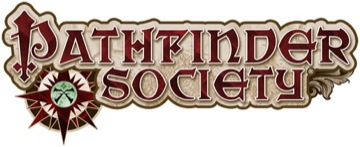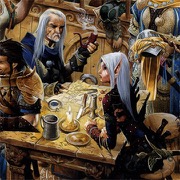
|
| 1 person marked this as a favorite. |
I'm assuming you mean animate dead.
I'm concerned with how it's going to be implemented in Pathfinder. How it's functioning in Starfinder informs that, but they are different games. The only reason that Starfinder is coming into the discussion is because that's the only version of the rule we have to look at.
If Pathfinder is going to do away with the evil descriptor, then obviously there would be no need for an FAQ addressing the evil descriptor. In that case, I think it's worth considering a specific FAQ addressing the use of animate dead, control undead, and necromancers in general, as the thing right now that is stopping GMs from causing problems for them at the table is basically that existing FAQ.
EDIT: Or like I tried to suggest however many post ago, a more general. "Don't give players infamy for using their class abilities, unless they're using them to do something that would earn infamy on its own," rule.
|
|
GM OfAnything wrote:@Ferious Thune, You could have saved a whole page of back-and-forth if you had clarified your intentions from the get-go.This is not meant as a negative comment. I just want to take moment to appreciate the irony of that statement in this context, as that is all I'm asking the campaign to do.
I did appreciate the irony and meant mostly "Practice what you preach". Your example is a good one for where an Infamy callout would be appropriate and expected.
Bringing similar situations to the attention of the development staff is probably a good idea. Leaving a comment or review on the specific scenarios is probably a good way to do that.

|
| 1 person marked this as a favorite. |
@Ferious Thune: it seems like all your actual examples circle back to two themes;
1) A scenario has an obvious "mean" path to follow, that a GM might take it upon himself to punish with infamy. My answer to that is that so far, Starfinder seems to anticipate those story paths and provide GM guidance for them. So the crisis you worry doesn't occur so much in practice as it does in theory. As a design paradigm for PFS2, I do think it's a good habit to incorporate some guidance for the GM on "what if the PCs do the obvious mean thing to fulfill their mission".
2) A GM might take it upon himself to punish "evil" character options with Infamy. My answer is that maybe we should have never allowed Animate Dead as a PFS PC option in the first place, that it's a legacy item from an earlier season when PFS was trying to be really edgy and play up the Society as an amoral prize up for grabs in the shadow war for Absalom between five unwholesome factions. It's still allowed not because it was a good idea to let it in, but because banning a previously legal option is such an extremely painful procedure that it only gets used if absolutely necessary.
You argue for more granular Infamy; other people argue that it should be even more minimalist. I think the Starfinder implementation is a decent compromise, you have to at some point step back and say "this is the amount of detail we can live with".

|
| 1 person marked this as a favorite. |
First off, I glanced back over my earlier messages, and I see where some of the language was stronger than intended. I did not mean to accuse BNW, Kevin, or anyone else on this thread of the malicious behavior that I'm worried about in the grander picture. I know them to be positive members of the community, even if I don't know them personally. Suffice it to say other frustrations were bleeding through into those messages, which don't have anything to do with them, and I apologize for anything that came across as an attack on either.
I don't think that I would say that those are the only two issues that I'm concerned about, but they certainly are two of the larger ones.
1) It's great if SFS has been doing a good job of it so far. Whatever issues have come up around PFS over the years, the scenarios have consistently improved, especially since John joined the team. I have no doubt that the team will try their best to address issues in the design of the scenarios. I also know that things slip by, and it would, in my opinion, be helpful to have guidance on how to handle situations when it does, because of the way it can create table variation in the scenario itself.
2) It's more than just animate dead, though if the campaign is going to decide to remove it and similar options, now would probably be the time to do it. I'm not certain that allowing animate dead had anything to do with factions, though. That doesn't seem like a logical connection to make. But it does actually predate my time in the campaign, so maybe?
You argue for more granular Infamy; other people argue that it should be even more minimalist. I think the Starfinder implementation is a decent compromise, you have to at some point step back and say "this is the amount of detail we can live with".
I'm not sure I've seen anyone in this thread arguing for infamy to be more minimalist. In what way? Is that a discussion that happened over on the SFS side?
To be clear, I'm not arguing for a more granular system to be implemented. I'm stating that the way that I read the SFS rule, it's aimed at things that are evil acts or things pretty close to evil acts, and that the penalty is appropriate for that. If the system is truly meant to include a variety of offenses that are not of the same magnitude, then I think that the penalty should also not be of the same magnitude for all of the offenses.





